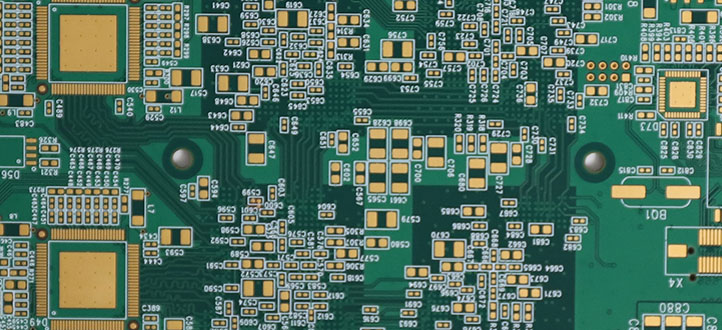The difference between PCB electroplating gold and immersion gold?

PCB assembly is an important process in electronic product manufacturing. PCB surface treatment refers to the application of a protective layer on the bare copper surface of the PCB to prevent copper oxidation, corrosion, and to improve solderability and reliability. Common PCB surface treatment processes include hot air leveling, organic solderability preservatives (OSP), electroless nickel/immersion gold (ENIG), immersion silver, immersion tin, and electroplated nickel-gold. This article mainly focuses on the differences between PCB gold plating and immersion gold processes.
PCB gold plating involves depositing a layer of nickel on the surface conductor of the PCB, followed by a layer of gold. The nickel plating primarily prevents diffusion between the gold and copper. PCB immersion gold, on the other hand, refers to depositing a stable, bright, and smooth nickel-gold layer on the PCB surface with good solderability. The main differences between PCB gold plating and immersion gold processes are as follows:
1. Gold plating is achieved through electrolysis and requires current and conductive patterns, while immersion gold is achieved through a chemical displacement reaction and does not require current or conductive patterns.
2. Gold plating can be selectively applied only where needed, such as in sockets and contact points, while immersion gold is applied uniformly, covering the entire PCB surface.
3. Gold plating allows for control of the gold layer thickness, typically ranging from 1-5 micrometers, while immersion gold has a relatively thin gold layer, typically ranging from 0.05-0.3 micrometers.
4. Gold plating can be divided into soft gold and hard gold. Soft gold is mainly used for wire bonding in chip packaging, while hard gold is primarily used for non-soldered electrical interconnections. Immersion gold, on the other hand, serves as a solderable protective layer for soldered connections.
5. Gold plating, due to its thicker gold layer, is more prone to gold embrittlement, where excessive gold dissolves into solder joints, causing them to become brittle. Immersion gold, with its thinner gold layer, rarely experiences gold embrittlement.
6. Gold plating involves multiple chemicals and complex process flows, resulting in higher costs. Immersion gold, on the other hand, has a simpler and faster process, leading to lower costs.
If you need PCB manufacturing services, including rapid prototyping, mass production, and PCB cloning, please feel free to contact us. We are a professional PCB prototyping factory with 17 years of experience.

